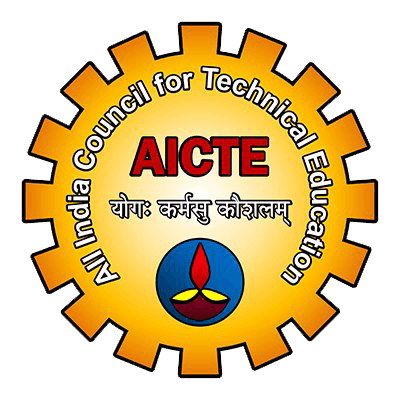

The Department of Electrical and Electronics Engineering of Paavai Engineering College organized a one week workshop on “Electromagnetic Fields” from 26.05.2025 to 03.06.2025. Dr.Elisabetta Sieni, University of Insubria, Italy was the resource person. The welcome address was given by Dr.C.Arulkumar, Associate Professor, Department of EEE, Paavai Engineering College and the Chief Guest introduction was given by Mr.R.Satheeshkumar, Assistant Professor, Department of EEE, Paavai Engineering College.
Day 1
Title : Electromagnetic Fields
The resource person introduces the concept of Electromagnetic fields are physical fields produced by electrically charged objects. They are composed of two components: electric fields, generated by voltage differences, and magnetic fields, produced by the flow of electric current. Together, they form electromagnetic waves that propagate through space.EMFs vary in frequency and energy, spanning from low-frequency fields (such as those from power lines) to high-frequency fields (such as X-rays and gamma rays). In daily life, we encounter EMFs in numerous applications—from household electronics and medical imaging (like MRI), to wireless communication and industrial processes. Understanding EMFs is critical for developing technologies such as wireless power transfer, RF communication, and bioelectromagnetic therapies, while also evaluating potential health and environmental impacts.
Day 2
Title : Electroporation and Electrochemotherpy
The resource person discussed electroporation is a technique where we apply short, high-voltage electric pulses to cells. These pulses temporarily open up the cell membrane, allowing large molecules—such as DNA, RNA, or certain drugs—to enter the cell. This method is widely used in gene therapy, cancer treatment, and vaccine development.
Building on this principle, we have Electrochemotherapy. In this technique, we administer a chemotherapeutic drug—commonly bleomycin or cisplatin—followed by electric pulses targeted at the tumor. These pulses enhance drug uptake specifically in cancer cells, significantly increasing treatment efficacy while minimizing systemic toxicity. It’s a promising approach, especially for cutaneous and subcutaneous tumors.
Day 3
Title : 3D Cell Culture with Nanoparticles & Simulations in Electroporation
The resource person discussed about 3D cell culture models better mimic the in vivo cellular environment compared to traditional 2D systems. When combined with nanoparticles, these models allow for more realistic studies of drug delivery, cellular uptake, and therapeutic responses. She explained Nanoparticles can be engineered for targeted delivery, controlled release, and imaging within 3D tissue-like structures, making them valuable in cancer therapy and regenerative medicine. In parallel, simulations in electroporation—using finite element modeling or multiphysics software—allow us to predict electric field distribution, pore formation, and molecule transport across cell membranes. She explained various models are crucial for optimizing pulse parameters and electrode designs, especially in complex tissues or 3D culture systems. Together, these tools are enhancing precision in therapeutic applications such as electrochemotherapy, gene delivery, and nano-enabled electroporation
Day 4
Title : Photovoltaic Plant Design
The guest speaker introduce about photovoltaic plant is a system designed to convert sunlight directly into electricity using solar panels. The design of such a plant involves several key steps to ensure maximum efficiency and sustainability.
First, we begin with a site assessment, analyzing solar irradiance, shading, orientation, and land availability. The selection of photovoltaic modules and inverters is crucial, based on performance, cost, and durability. Next, the system layout is created, determining the number of panels, their tilt angle, and electrical configuration. We also calculate energy output estimates using solar simulation tools to predict performance over time. In addition, electrical design includes planning cabling, protection devices, and connection to the grid or storage systems. Finally, environmental and economic factors, including return on investment (ROI) and regulatory compliance, are considered. Designing an efficient PV plant not only supports clean energy goals but also contributes to energy independence and carbon reduction.
Day 5
Title : Photovoltaic Plant Design Part 1
The resource person explained about Photovoltaic Plant Design 1 primarily involves the preliminary planning and feasibility assessment of a solar power system. This includes:
Site Selection – Evaluating solar irradiance, land availability, shading, orientation, and environmental conditions. She shared ideas about Load Analysis – Understanding the energy demand to determine system size and technology choice – Selecting the type of solar panels (e.g., monocrystalline or polycrystalline) and inverters (central or string).she discussed about System Layout Planning – Designing the array structure, tilt angle, and panel orientation for optimal sunlight capture and also Preliminary Yield Estimation – Using solar modeling software to predict energy output and efficiency. She explained the initial phase sets the foundation for a technically and economically viable photovoltaic plant. Proper assessment at this stage ensures the long-term success of the project.
The session was attended by faculty members from various departments. The vote of thanks was delivered by Mr. R. Satheeshkumar, Assistant Professor, Department of EEE, Paavai Engineering College. Dr. G. Balaji, Professor and Head of the EEE Department, along with Dr. C. Arulkumar and Mr. R. Satheeshkumar, made the necessary arrangements for organizing the program.